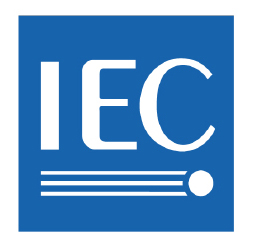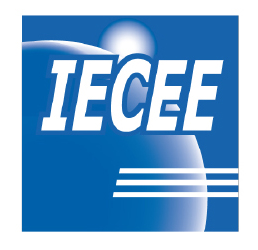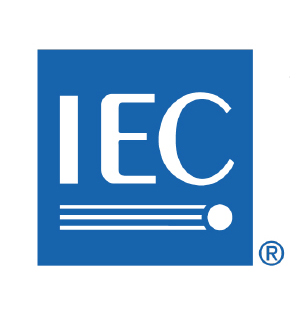Delta Electronics (Thailand) Public Co. Ltd.
Delta Electronics (Thailand) Public Co. Ltd.
| Address(es) |
|
| Website | http://www.deltaww.com/ |
| Status | MEMBER |
| Acceptance date | 2018-11-26 |
Further information
Stage | Country | Name |
|---|---|---|
2 | Slovenia |
LEGEND: Scope Limitations
- RA : Audio amplifiers with audio power > 0,5 Watts excluded
- RC : Apparatus with connection(s) to a cable distribution system excluded
- RSH : Shredders excluded
- RT : Apparatus with connection(s) to a telecommunication network excluded
- RV : CRT (cathode ray tubes)/ picture tubes, plasma/LCD or other video apparatus excluded
- ROUT : Equipment intended for installation outdoors excluded
- RWPT : Wireless power transmitter excluded
Category | Name | Tests/Clauses | Acceptance Date | Responsible National Certification Body |
|---|---|---|---|---|
ITAV | IEC 62368-1:2018 | 5.2 Electrical energy source measurement/classification5.4.1.4 Measurement of maximum operating temperatures for materials, components and systems5.4.1.8 Determination of working voltage5.4.1.10.3 Ball pressure test5.4.2 / 5.4.3 Clearance and creepage distances5.4.4.2 Minimum distance through insulation5.4.4.6.2 Separable thin sheet material5.4.7 Tests for semiconductor components and for cemented joints (thermal cycling test)5.4.8 Humidity conditioning5.4.9 Electric strength test5.5.2.2 Capacitor discharge test5.6.6 Resistance of the protective bonding system5.7 Prospective touch voltage, touch current and protective conductor current6.2.2.2 Power measurement for worst-case fault6.2.2.3 Power measurement for worst-case power source fault8.7 Equipment mounted to wall, ceiling or other structure8.8 Handle strength9.3 Touch temperature limitsB.2.5 Input testB.3.1 – B.3.8 Simulated abnormal operating conditions:- Covering of ventilation openings- DC mains polarity test- Setting of voltage selector- Maximum load at output terminalsB.4.3.1 Blocked motor testB.4.4.1 Short circuit of clearances for functional insulationB.4.4.2 Short circuit of creepage distances for functional insulationB.4.5 Short circuit and interruption of electrodes in tubes and semiconductorsB.4.6 Short circuit or disconnection of passive devicesB.4.7 Continuous operation of componentsF.3.10 Permanence of markingsG.5.3.3 Transformer overload testAnnex Q.1 Limited Power SourceAnnex R Limited short-circuit test (protective bonding)T.2 Steady force test, 10 NT.3 Steady force test, 30 NT.4 Steady force test, 100 NT.5 Steady force test, 250 NT.6 Enclosure impact testT.7 Drop testT.8 Stress relief testV.1.2 Test method 1 - Surfaces and openings tested with jointed test probeV.1.3 Test method 2 - Openings tested with straight unjointed test probe | 2021-02-22 | |
ITAV | IEC 62368-1:2014 | Electrical energy source measurement/classification (5.2), Measurement of maximum operating temperatures for materials, components and systems (5.4.1.4), Determination of working voltage (5.4.1.8), Ball pressure test (5.4.1.10.3), Clearance and creepage distances (5.4.2 / 5.4.3), Minimum distance through insulation (5.4.4.2), Separable thin sheet material (5.4.4.6.2), Tests for semiconductor components and for cemented joints (thermal cycling test) (5.4.7), Humidity conditioning (5.4.8), Electric strength test (5.4.9), Capacitor discharge test (5.5.2.2), Resistance of the protective bonding system (5.6.6), Prospective touch voltage, touch current and protective conductor current (5.7), Power measurement for worst-case fault (6.2.2.2), Power measurement for worst-case power source fault (6.2.2.3), Temperature test (9.2.5), Input test (B.2.5), Simulated abnormal operating conditions: - Covering of ventilation openings, - DC mains polarity test, - Setting of voltage selector, - Maximum load at output terminals, - Short circuit of clearances for functional insulation, - Short circuit of creepage distances for functional insulation, - Short circuit and interruption of electrodes in tubes and semiconductors, - Short circuit or disconnection of passive devices, - Continuous operation of components (B.3.1 – B.3.8), Permanence of markings (F.3.10), Transformer overload test (G.5.3.3), Limited Power Source (Annex Q.1), Limited short-circuit test (protective bonding) (Annex R), Steady force test, 10 N (T.2), Steady force test, 30 N (T.3), Steady force test, 100 N (T.4), Steady force test, 250 N (T.5), Enclosure impact tests (T.6), Drop test (T.7), Test method 1 - Surfaces and openings tested with jointed test probe (V.1.2), Test method 2 - Openings tested with straight unjointed test probe (V.1.3) | 2018-11-26 | |
MEAS | IEC 61010-1:2010 | 4.4 Single Fault Conditions5.1.3 AC Mains supply5.3 Durability of markings test6.2 Determination of Accessible parts6.3.1 Values in normal condition6.3.2 Values in single fault condition6.5.2.2 Measurement of bonding conductors6.5.2.3 Tightening torque test6.5.2.4 Bonding impedance of plug connected equipment6.5.2.5 Bonding impedance of permanently connected equipment6.5.4 Protective impedance6.5.4 Current or voltage limiting device6.7 Clearances and creepage distances6.8 Dielectric strength test9.4 Limited energy circuit determination test10 Temperature measurements10.5.3 Ball pressure test7.6 Wall mounting test | 2021-02-22 | |
MEAS | IEC 61010-1:2010/AMD1:2016 | 4.4 Single Fault Conditions5.1.3 AC Mains supply5.3 Durability of markings test6.2 Determination of Accessible parts6.3.1 Values in normal condition6.3.2 Values in single fault condition6.5.2.2 Measurement of bonding conductors6.5.2.3 Tightening torque test6.5.2.4 Bonding impedance of plug connected equipment6.5.2.5 Bonding impedance of permanently connected equipment6.5.4 Protective impedance6.5.4 Current or voltage limiting device6.7 Clearances and creepage distances6.8 Dielectric strength test9.4 Limited energy circuit determination test10 Temperature measurements10.5.3 Ball pressure test7.6 Wall mounting test | 2021-02-22 | |
MEAS | IEC 61010-2-201:2017 | 4.4.1.101 Switching devices testsOverload test per 4.4.1.101.1 | 2021-02-22 | |
MEAS | IEC 61010-2-201:2013 | 4.4.1.101 Switching devices testsOverload test per 4.4.1.101.1 | 2021-02-22 | |
MED | IEC 60601-1:2005 | Power Input (4.11), Humidity treatment (5.7), Legibility of marking (7.1.2), Durability of marking (7.1.3), Limitation of voltage current or energy (8.4.2 c), ME equipment intended to be connected to a power source by a plug (8.4.3), Working voltage Measurement (8.5.4), Impedance and current- carrying capability of protective earth connections (8.6.4), Earth Leakage Current (8.7.4.5), Touch Current (8.7.4.6), Dielectric Strength test of solid insulation materials with safety functions (8.8.3), Short circuits in Mains part over creepage and clearance distances (8.9.2), Thermal Cycling Test on one sample of insulation compound forming solid insulation between conductive parts (8.9.3.2), Thermal Cycling test on one Sample of Cemented joint (8.9.3.4), Measurement of creepage distances and air clearances (8.9.4), Excessive temperatures in ME EQUIPMENT (11.1), Measurement of power or energy dissipation in parts & components (13.1), Single Fault conditions (13.2), Push test (15.3.2), Impact test (15.3.3), Drop test (15.3.4), Mould-stress relief test (15.3.6), Transformer short circuit (15.5.1.2), Transformer overload (15.5.1.3), Transformer dielectric strength after humidity preconditioning of 5.7 (15.5.2), Evaluation of voltage limiting components in SELV circuits | 2018-11-26 | |
MED | IEC 60601-1:2005/AMD1:2012 | Power Input (4.11), Humidity treatment (5.7), Legibility of marking (7.1.2), Durability of marking (7.1.3), Limitation of voltage current or energy (8.4.2 c), ME equipment intended to be connected to a power source by a plug (8.4.3), Working voltage Measurement (8.5.4), Impedance and current- carrying capability of protective earth connections (8.6.4), Earth Leakage Current (8.7.4.5), Touch Current (8.7.4.6), Dielectric Strength test of solid insulation materials with safety functions (8.8.3), Short circuits in Mains part over creepage and clearance distances (8.9.2), Thermal Cycling Test on one sample of insulation compound forming solid insulation between conductive parts (8.9.3.2), Thermal Cycling test on one Sample of Cemented joint (8.9.3.4), Measurement of creepage distances and air clearances (8.9.4), Excessive temperatures in ME EQUIPMENT (11.1), Measurement of power or energy dissipation in parts & components (13.1), Single Fault conditions (13.2), Push test (15.3.2), Impact test (15.3.3), Drop test (15.3.4), Mould-stress relief test (15.3.6), Transformer short circuit (15.5.1.2), Transformer overload (15.5.1.3), Transformer dielectric strength after humidity preconditioning of 5.7 (15.5.2), Evaluation of voltage limiting components in SELV circuits | 2018-11-26 | |
MED | IEC 60601-1:2005/AMD2:2020 | Power Input (4.11), Humidity treatment (5.7), Legibility of marking (7.1.2), Durability of marking (7.1.3), Limitation of voltage current or energy (8.4.2 c), ME equipment intended to be connected to a power source by a plug (8.4.3), Working voltage Measurement (8.5.4), Impedance and current- carrying capability of protective earth connections (8.6.4), Earth Leakage Current (8.7.4.5), Touch Current (8.7.4.6), Dielectric Strength test of solid insulation materials with safety functions (8.8.3), Short circuits in Mains part over creepage and clearance distances (8.9.2), Thermal Cycling Test on one sample of insulation compound forming solid insulation between conductive parts (8.9.3.2), Thermal Cycling test on one Sample of Cemented joint (8.9.3.4), Measurement of creepage distances and air clearances (8.9.4), Excessive temperatures in ME EQUIPMENT (11.1), Measurement of power or energy dissipation in parts & components (13.1), Single Fault conditions (13.2), Push test (15.3.2), Impact test (15.3.3), Drop test (15.3.4), Mould-stress relief test (15.3.6), Transformer short circuit (15.5.1.2), Transformer overload (15.5.1.3), Transformer dielectric strength after humidity preconditioning of 5.7 (15.5.2), Evaluation of voltage limiting components in SELV circuits | 2023-08-01 | |
OFF | IEC 60950-1:2005 | Input current (1.6.2), Durability test (1.7.11), Energy hazard (2.1.1.5), Capacitor discharge test (2.1.1.7), SELV measurements (2.2.2), SELV reliability (2.2.3), Limited current circuit (2.4), Limited power source (2.5), Earth resistance test (2.6.3.4), Humidity test (2.9.2), Working voltage measurements (2.10.2), Clearances (2.10.3), Creepage distances (2.10.4), El. Strength test on Thin sheet material (2.10.5.9/2.10.5.10), Thermal cycling test (2.10.9 & 2.10.10 & 2.10.11), 10N steady force test (4.2.2), 30N steady force test (4.2.3), 250N steady force test (4.2.4), Impact test (4.2.5), Stress relief test (4.2.7), Thermal measurements (4.5.2), Resistance to abnormal heat (4.5.5.), Touch current and protective conductor current (5.1), Electric strength test (5.2), Abnormal operating and fault conditions (5.3) | 2018-11-26 | |
OFF | IEC 60950-1:2005/AMD1:2009 | Input current (1.6.2), Durability test (1.7.11), Energy hazard (2.1.1.5), Capacitor discharge test (2.1.1.7), SELV measurements (2.2.2), SELV reliability (2.2.3), Limited current circuit (2.4), Limited power source (2.5), Earth resistance test (2.6.3.4), Humidity test (2.9.2), Working voltage measurements (2.10.2), Clearances (2.10.3), Creepage distances (2.10.4), El. Strength test on Thin sheet material (2.10.5.9/2.10.5.10), Thermal cycling test (2.10.9 & 2.10.10 & 2.10.11), 10N steady force test (4.2.2), 30N steady force test (4.2.3), 250N steady force test (4.2.4), Impact test (4.2.5), Stress relief test (4.2.7), Thermal measurements (4.5.2), Resistance to abnormal heat (4.5.5.), Touch current and protective conductor current (5.1), Electric strength test (5.2), Abnormal operating and fault conditions (5.3) | 2018-11-26 | |
OFF | IEC 60950-1:2005/AMD2:2013 | Input current (1.6.2), Durability test (1.7.11), Energy hazard (2.1.1.5), Capacitor discharge test (2.1.1.7), SELV measurements (2.2.2), SELV reliability (2.2.3), Limited current circuit (2.4), Limited power source (2.5), Earth resistance test (2.6.3.4), Humidity test (2.9.2), Working voltage measurements (2.10.2), Clearances (2.10.3), Creepage distances (2.10.4), El. Strength test on Thin sheet material (2.10.5.9/2.10.5.10), Thermal cycling test (2.10.9 & 2.10.10 & 2.10.11), 10N steady force test (4.2.2), 30N steady force test (4.2.3), 250N steady force test (4.2.4), Impact test (4.2.5), Stress relief test (4.2.7), Thermal measurements (4.5.2), Resistance to abnormal heat (4.5.5.), Touch current and protective conductor current (5.1), Electric strength test (5.2), Abnormal operating and fault conditions (5.3) | 2018-11-26 | |
SAFE | IEC 61558-1:2017 | Limit values for accessible parts test (cl. 9.2, 19.8)Capacitance discharge test (cl. 9.3)Rated output @rated input voltage (cl. 11)No-load output voltage test (Cl.12, Cl.12.101&Cl.12.102)Temperature test (cl. 14)Short circuit and overload protection test (cl. 15, H.3)Humidity test (cl. 17.2)Isolation resistance (after humidity) (cl. 18.2)Dielectric strength test (cl. 18.3)Touch current and protective earthing conductor current test (cl. 18.5)Earthing test (cl. 24.4)Working voltage measurement test (cl. 26)Ball Pressure Test of Thermoplastics (cl. 27.2) | 2024-04-17 | |
SAFE | IEC 61558-2-16:2009 | Limit values for accessible parts test (cl. 9.2, 19.8)Capacitance discharge test (cl. 9.3)Rated output @rated input voltage (cl. 11)No-load output voltage test (Cl.12, Cl.12.101&Cl.12.102)Temperature test (cl. 14)Short circuit and overload protection test (cl. 15, H.3)Humidity test (cl. 17.2)Isolation resistance (after humidity) (cl. 18.2)Dielectric strength test (cl. 18.3)Touch current and protective earthing conductor current test (cl. 18.5)Earthing test (cl. 24.4)Working voltage measurement test (cl. 26)Ball Pressure Test of Thermoplastics (cl. 27.2) | 2024-04-17 | |
SAFE | IEC 61558-2-16:2009/AMD1:2013 | Limit values for accessible parts test (cl. 9.2, 19.8)Capacitance discharge test (cl. 9.3)Rated output @rated input voltage (cl. 11)No-load output voltage test (Cl.12, Cl.12.101&Cl.12.102)Temperature test (cl. 14)Short circuit and overload protection test (cl. 15, H.3)Humidity test (cl. 17.2)Isolation resistance (after humidity) (cl. 18.2)Dielectric strength test (cl. 18.3)Touch current and protective earthing conductor current test (cl. 18.5)Earthing test (cl. 24.4)Working voltage measurement test (cl. 26)Ball Pressure Test of Thermoplastics (cl. 27.2) | 2024-04-17 |



